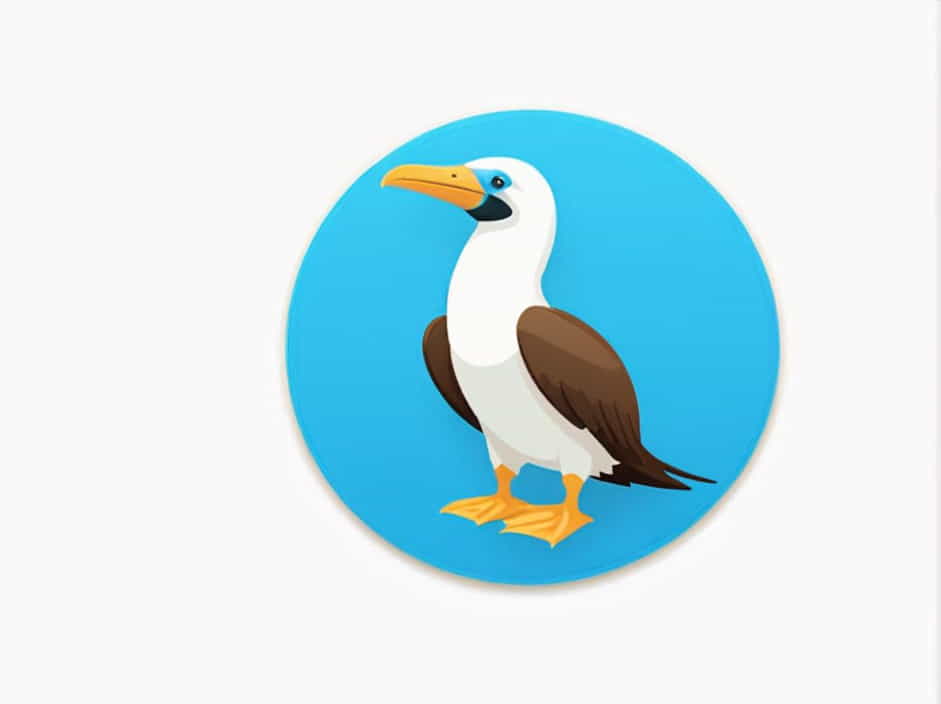The blue-footed booby (Sula nebouxii) is a seabird known for its striking blue feet and unique courtship dance. Native to the eastern Pacific Ocean, this bird is commonly found in the Galápagos Islands but also inhabits coastal regions from Mexico to Peru.
With its quirky appearance and fascinating behaviors, the blue-footed booby has become a favorite among wildlife enthusiasts. This topic explores its physical characteristics, habitat, diet, mating rituals, and conservation status.
Physical Characteristics of the Blue-Footed Booby
The blue-footed booby is a medium-to-large seabird, easily recognized by its distinct features.
Size and Body Structure
- Length: Around 80-85 cm (31-33 inches)
- Wingspan: Approximately 1.5 meters (5 feet)
- Weight: Between 1-1.5 kg (2.2-3.3 lbs)
This bird has a streamlined body, making it an excellent diver and efficient flyer over open waters.
The Iconic Blue Feet
- The blue feet are the most recognizable trait of this species.
- The color comes from carotenoid pigments in their diet, mainly obtained from eating fish.
- Brighter blue feet indicate better health and strong genetics, making them essential in courtship displays.
Plumage and Facial Features
- Head and Neck: White or light gray with speckled brown patches.
- Back and Wings: Brown with white spots for camouflage.
- Belly and Underside: Bright white.
- Eyes: Yellow or pale green, giving them a distinct gaze.
- Beak: Sharp and slightly curved, ideal for catching fish.
Their aerodynamic body and long wings help them glide over the ocean, while their feet play a role in thermoregulation.
Habitat and Distribution
Where Do Blue-Footed Boobies Live?
- They are native to the eastern Pacific Ocean.
- Galápagos Islands have the largest population of these birds.
- They also inhabit coastal areas in Mexico, Ecuador, and Peru.
Preferred Environment
- They prefer rocky coastlines, islands, and cliffs near the ocean.
- They nest on flat, sandy ground, often in isolated regions with minimal predators.
- They rely on warm ocean currents that bring plenty of fish.
What Do Blue-Footed Boobies Eat?
These birds are expert hunters with a diet consisting mostly of fish.
Hunting Techniques
- They perform spectacular plunge-dives, dropping from heights of 80 feet (24 meters).
- They can hit the water at speeds of 60 mph (97 km/h) to catch prey.
- Their nostrils are permanently closed, preventing water from rushing in.
Diet
- Anchovies
- Sardines
- Mackerel
- Squid (occasionally)
They often hunt in groups, diving simultaneously to increase their success rate.
The Unique Mating Dance of Blue-Footed Boobies
The blue-footed booby’s courtship dance is one of the most famous rituals in the animal kingdom.
How Do They Attract a Mate?
- Foot Display: Males lift their bright blue feet, showing off their color.
- High-Stepping Dance: They perform an exaggerated march to impress females.
- Sky-Pointing: Males stretch their wings and beak toward the sky, signaling readiness to mate.
- Gift Giving: Males may offer twigs or small stones to females as a sign of affection.
Females prefer males with the brightest blue feet, as this indicates good health and fertility.
Nesting and Parenting
- Blue-footed boobies nest on the ground in small colonies.
- A typical clutch size is 1-3 eggs.
- Both parents take turns incubating the eggs using their feet to keep them warm.
- Chicks hatch after 40-45 days and rely on their parents for food until they can hunt.
Behavior and Adaptations
Blue-footed boobies have unique behaviors that help them survive in their environment.
Social Structure
- They are colonial birds, nesting in large groups.
- They engage in cooperative hunting, increasing their chances of catching fish.
Flight and Swimming Abilities
- Their long wings allow them to glide effortlessly over the ocean.
- They are strong swimmers, using their webbed feet to navigate underwater.
Predators and Threats
While adult blue-footed boobies have few natural predators, their eggs and chicks are vulnerable.
Predators
- Frigatebirds steal eggs and young chicks.
- Snakes and rats may raid nests on land.
- Sharks occasionally prey on weak or injured individuals.
Human-Related Threats
- Overfishing reduces their food supply.
- Climate change affects ocean temperatures, impacting fish populations.
- Pollution and plastic waste pose a risk to marine life.
Conservation Status
Are Blue-Footed Boobies Endangered?
- They are currently listed as “Least Concern” by conservation organizations.
- However, their population has declined in recent years, mainly due to food scarcity.
Conservation Efforts
- Protected areas like the Galápagos National Park help preserve their habitat.
- Marine conservation programs focus on reducing overfishing.
- Eco-tourism initiatives raise awareness and fund research efforts.
Interesting Facts About Blue-Footed Boobies
- The word “booby” comes from the Spanish word “bobo,” meaning “fool.” Early sailors thought these birds were clumsy on land.
- Both male and female boobies have blue feet, but males typically have brighter shades.
- They can fly long distances and often travel hundreds of miles in search of food.
- Chicks compete aggressively for food, sometimes leading to siblicide (one chick outcompeting the other).
- Their courtship dance is so unique that it has been featured in numerous nature documentaries.
The blue-footed booby is an extraordinary seabird with its brilliant blue feet, dramatic hunting dives, and charming mating dance. Found primarily in the Galápagos Islands and along the Pacific coast, it thrives in marine environments rich in fish.
Despite some population declines, conservation efforts continue to protect this species. With its quirky personality and fascinating behavior, the blue-footed booby remains one of the most beloved birds in the world.
